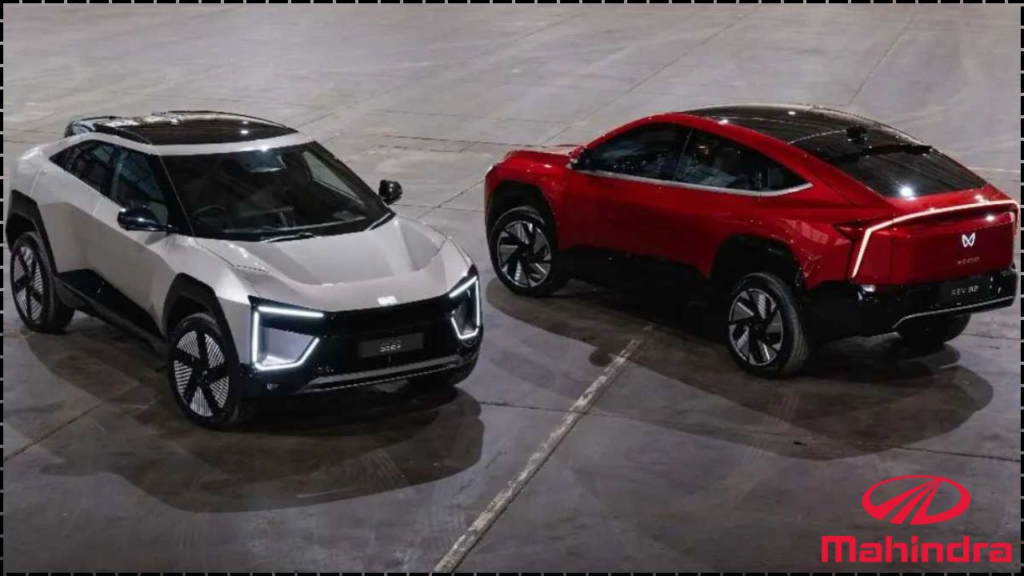
India’s Mahindra BE 6 and XEV 9e electric SUVs recorded steady production and export growth in September 2025, positioning the automaker to benefit from rising festive season demand. The company’s ramp-up underscores its ambition to expand both domestic and international EV markets.
Surge in Production and Dispatches
Production of the Mahindra BE 6 and XEV 9e reached 5,959 units in September, up about 21 percent from the previous month, according to industry dispatch data and company filings. Domestic dispatches rose to 4,320 units, the highest monthly figure since the vehicles launched earlier this year.
The company’s exports also increased to 210 units, the strongest monthly performance since overseas shipments began. Analysts say this reflects Mahindra’s gradual strategy to position its EV lineup in select international markets.
“ The BE 6 and XEV 9e have emerged as key pillars of Mahindra’s EV strategy. September’s figures signal strong alignment between production planning and consumer demand,” said Ravi Menon, auto industry analyst at Nomura India.
Exports Show Momentum as Mahindra Targets New Markets
Mahindra began exporting the two EV models in early 2025, initially targeting Southeast Asian and European markets with favorable EV policies. By September, total overseas shipments had surpassed 1,000 units, supported by growing demand in markets like France, the United Kingdom, and Thailand.
Industry observers note that Mahindra is following a phased export model to manage supply chains and meet regulatory requirements in each market.
“EV exports are still modest compared to the company’s ICE portfolio, but the upward trajectory is clear,” said Ananya Sinha, senior researcher at the Centre for Automotive Futures. “It reflects Mahindra’s confidence in its electric architecture and its readiness to compete internationally.”
Festive Season Demand Could Boost Domestic Sales
India’s festive season, which peaks around Diwali in November, is traditionally one of the strongest periods for automobile sales. Automakers frequently offer limited-time promotions and financing deals to attract buyers.
Mahindra is expected to roll out customer incentives, including free accessories, extended warranties, and flexible financing for BE 6 and XEV 9e models. Industry executives say these measures could help the company capture a larger share of India’s expanding EV market.
In the first nine months of 2025, Mahindra sold more than 22,800 electric SUVs, up 339 percent year-on-year. BE 6 and XEV 9e account for roughly six percent of Mahindra’s total SUV dispatches, a figure expected to rise during the festive period.
Market Context: India’s Accelerating EV Transition
India’s EV market is expanding rapidly, supported by government incentives under the Faster Adoption and Manufacturing of Hybrid and Electric Vehicles (FAME) scheme and state-level subsidies. EV penetration in passenger vehicles rose to nearly seven percent by mid-2025, compared with 2.5 percent two years earlier, according to the Society of Indian Automobile Manufacturers (SIAM).
Mahindra competes with Tata Motors, Hyundai, and MG Motor India in the electric SUV segment. Analysts expect intensified competition in late 2025 as new models and pricing strategies emerge.
“The upcoming festive season will be a key test of how deep EV demand runs beyond early adopters,” said Dr. R. Krishnan, professor of automotive economics at the Indian Institute of Management Bangalore. “The winners will be those who balance pricing, infrastructure partnerships, and customer confidence.”
Challenges: Supply Chain, Charging Infrastructure, and Policy Shifts
Despite strong growth, Mahindra faces hurdles common to India’s EV industry. These include supply chain constraints for batteries and semiconductor components, uneven charging infrastructure outside major cities, and the potential impact of policy changes on incentives.
“If supply chains tighten or incentives shift, companies may need to recalibrate production and pricing,” said Sinha. “The sector remains highly sensitive to regulatory timelines.”
The company has indicated plans to localize more battery production and expand its fast-charging partnerships to mitigate these risks.
Outlook: Sustained Growth with Strategic Caution
Market analysts project Mahindra’s EV volumes could grow by 40 to 50 percent year-on-year if production remains stable and demand holds through the festive season. Export growth is also expected to accelerate as more international certifications are secured in 2026.
However, rising competition and infrastructure gaps could shape how much of this momentum Mahindra can sustain.
“The BE 6 and XEV 9e are well-positioned, but Mahindra will need disciplined scaling to maintain margins and quality,” Menon noted.

















